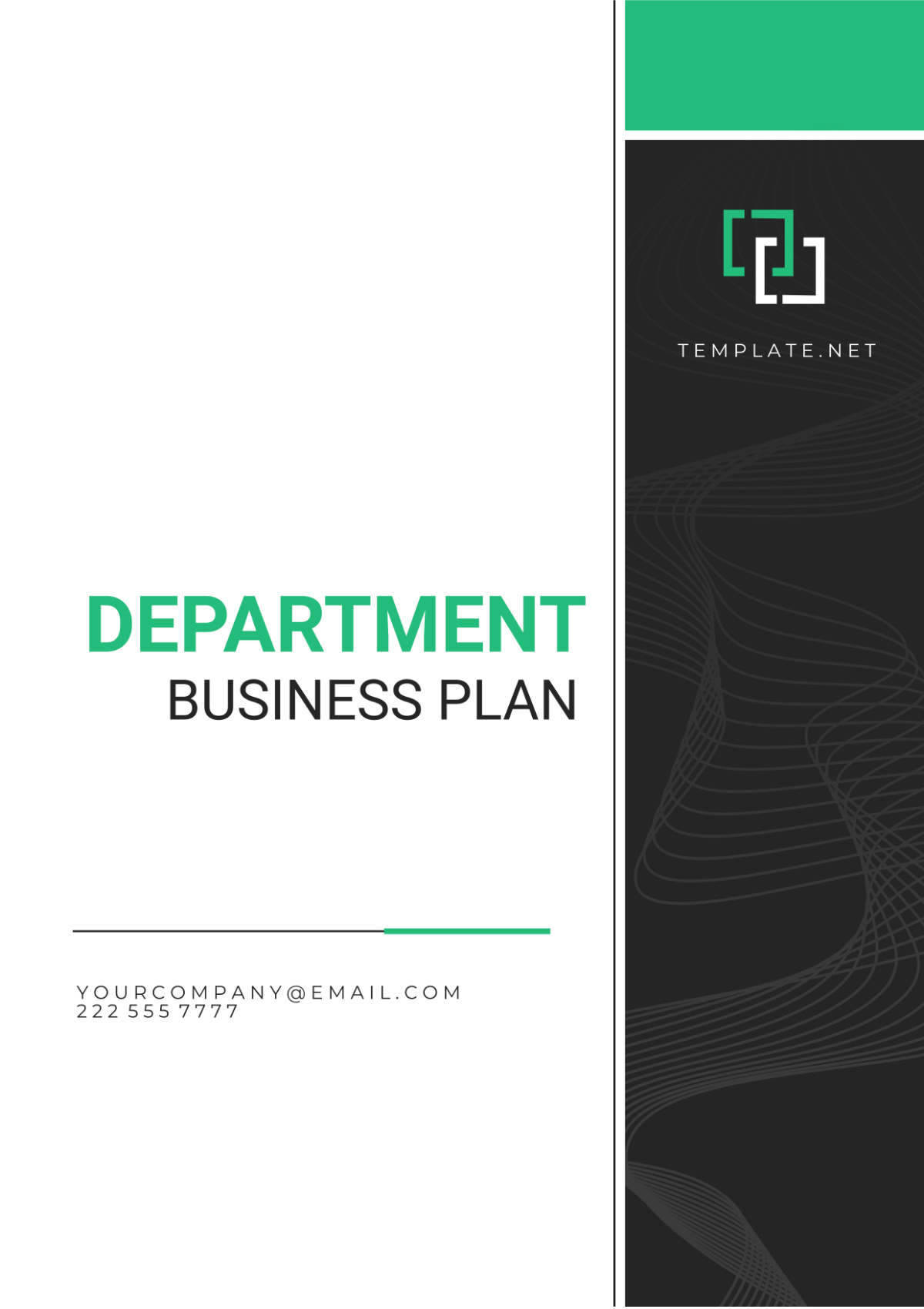Architecture Business Continuity Plan
I. Introduction
The Business Continuity Plan (BCP) for [Your Company Name] has been designed to ensure the uninterrupted operation of the firm in the event of unforeseen disruptions or crises. This plan outlines the strategies and procedures that will be followed to maintain essential business functions and minimize the impact of emergencies on the company, clients, and stakeholders.
II. Purpose of the Plan
The purpose of the BCP is to ensure that [Your Company Name], an architecture firm, can continue delivering critical services to its clients and maintain its operational integrity during and after disruptive events. The plan seeks to:
Protect the health and safety of employees, clients, and stakeholders.
Safeguard vital company data, systems, and infrastructure.
Minimize downtime and financial loss during disruptions.
Ensure compliance with legal and regulatory requirements.
Provide clear guidelines for resuming normal operations as quickly and efficiently as possible.
III. Risk Assessment and Business Impact Analysis
[Your Company Name] has identified several key risks that could potentially impact the firm's ability to operate. These include:
Natural Disasters: Events such as earthquakes, floods, and storms could disrupt physical office locations and equipment.
Cybersecurity Threats: Data breaches, ransomware attacks, or other cyber threats could compromise sensitive architectural designs, client information, and proprietary software.
Utility and Infrastructure Failures: Power outages, water supply disruptions, or internet service interruptions may affect the firm's ability to work on time-sensitive projects.
Pandemics and Health Crises: Health-related disruptions, such as pandemics, could limit staff availability and halt in-person meetings with clients and contractors.
Each of the risks has been assessed for its potential impact on the firm's critical operations. Projects, communications with clients, access to architectural software, and employee productivity are some of the core areas identified as vulnerable. The BIA provides guidance on prioritizing these elements for continuity planning.
IV. Key Business Functions and Priorities
The BCP prioritizes the continuity of the following core functions at [Your Company Name]:
Project Management and Design: The delivery of ongoing architectural projects must continue with minimal disruption, ensuring that deadlines are met and client expectations are managed.
Client Communication: Uninterrupted communication with clients, contractors, and suppliers is essential. Virtual communication systems (emails, video conferencing) will be prioritized if physical meetings are not possible.
Data Security and Backup: Maintaining access to architectural designs, contracts, financial data, and other proprietary information is critical to business continuity. Regular backups and robust cybersecurity measures will protect sensitive data.
Employee Productivity and Well-being: Employee safety and the ability to continue working remotely or in-office as conditions permit will be a priority to ensure ongoing project development.
V. Incident Response Team (IRT)
[Your Company Name] has established an Incident Response Team (IRT) to oversee the implementation and execution of the Business Continuity Plan. This team is responsible for coordinating response activities, assessing the severity of disruptions, and communicating with stakeholders during emergencies.
Team Leader: Oversees the entire BCP, makes high-level decisions, and communicates with external stakeholders, including clients and regulators.
IT and Security Manager: Manages the cybersecurity protocols, ensures system recovery, and protects digital assets in case of a breach.
Operations Manager: Coordinates efforts to maintain essential functions such as project management, client communication, and employee workflows.
HR Manager: Ensures employee safety, manages remote work protocols, and oversees communication with staff during disruptions.
VI. Emergency Contact Information
The Emergency Contact Information table provides an organized overview of the key individuals and service providers that are essential during a disruption. Each role is linked to a specific responsibility within the BCP, ensuring that contact information is readily available for rapid communication.
Contact Type | Phone Number | Email Address |
|---|---|---|
Incident Response Team Lead | [Number] | [Email] |
IT and Security Manager | [Number] | [Email] |
Operations Manager | [Number] | [Email] |
HR Manager | [Number] | [Email] |
Internet Service Provider | [Number] | [Email] |
Cloud Backup Provider | [Number] | [Email] |
Local Emergency Services | [Number] | [Email] |
Client Services Lead | [Number] | [Email] |
VII. Continuity Strategies
A. Remote Work and Telecommuting Plan
In the event of an office closure or utility outage, [Your Company Name] will shift operations to a remote work model. All employees will be equipped with the necessary technology (laptops, VPN access, communication tools) to continue their work from home.
B. Data Backup and Security
Offsite Backups: All important architectural drawings, financial records, and client data will be backed up regularly and stored in a secure offsite location or cloud system.
Cybersecurity Measures: Firewall protections, antivirus software, and multi-factor authentication systems will be in place to ensure data security during remote operations.
C. Supplier and Client Management
Maintain strong relationships with third-party contractors and suppliers to ensure ongoing project support.
Notify clients promptly about any potential project delays and provide contingency plans to minimize service disruptions.
VIII. Testing and Maintenance of the Plan
Regular testing and updating of the BCP are critical for ensuring its effectiveness. [Your Company Name] will:
Conduct Regular Drills: Simulate different disaster scenarios, such as power outages or cyberattacks, to evaluate the readiness of the Incident Response Team and employees.
Review and Update: The BCP will be reviewed annually and updated based on changes in business operations, risk assessments, or technology advancements.
Maintenance Schedule:
Item | Frequency | Responsible Team |
|---|---|---|
Data Backup | Daily | IT and Security Team |
System Vulnerability Tests | Quarterly | IT and Security Team |
BCP Review and Updates | Annually | Operations and Management |
Employee Training | Bi-Annual | HR and Operations Teams |
Remote Access Testing | Bi-Monthly | IT and Operations Teams |
IX. Communication Plan
During any disruption, communication with internal and external stakeholders is crucial. [Your Company Name] will:
Notify Employees: Inform all employees about the nature of the disruption and provide instructions on remote work or office safety measures.
Client Communication: Proactively reach out to clients with updates on ongoing projects, expected delays, and any changes in service delivery.
Public Relations: If necessary, release official statements to the public or media to maintain transparency about disruptions and company efforts.
X. Next Steps and Review
To ensure that the Business Continuity Plan remains effective, [Your Company Name] will undertake the following next steps:
Train Key Staff: Ensure that all team members, particularly those in the Incident Response Team, are thoroughly trained on their responsibilities during a crisis.
Evaluate Risk: Continue to evaluate emerging risks, such as cybersecurity threats and potential natural disasters, and adjust the plan accordingly.
Improve Resilience: Invest in technology, secure backup systems, and risk management strategies that enhance the company’s resilience to unforeseen events.
By implementing this Business Continuity Plan, [Your Company Name] aims to ensure that it remains operational and resilient in the face of adversity. This plan will protect the company’s assets, its employees, and its valued clients, ensuring the delivery of high-quality services, even during challenging times.

















































